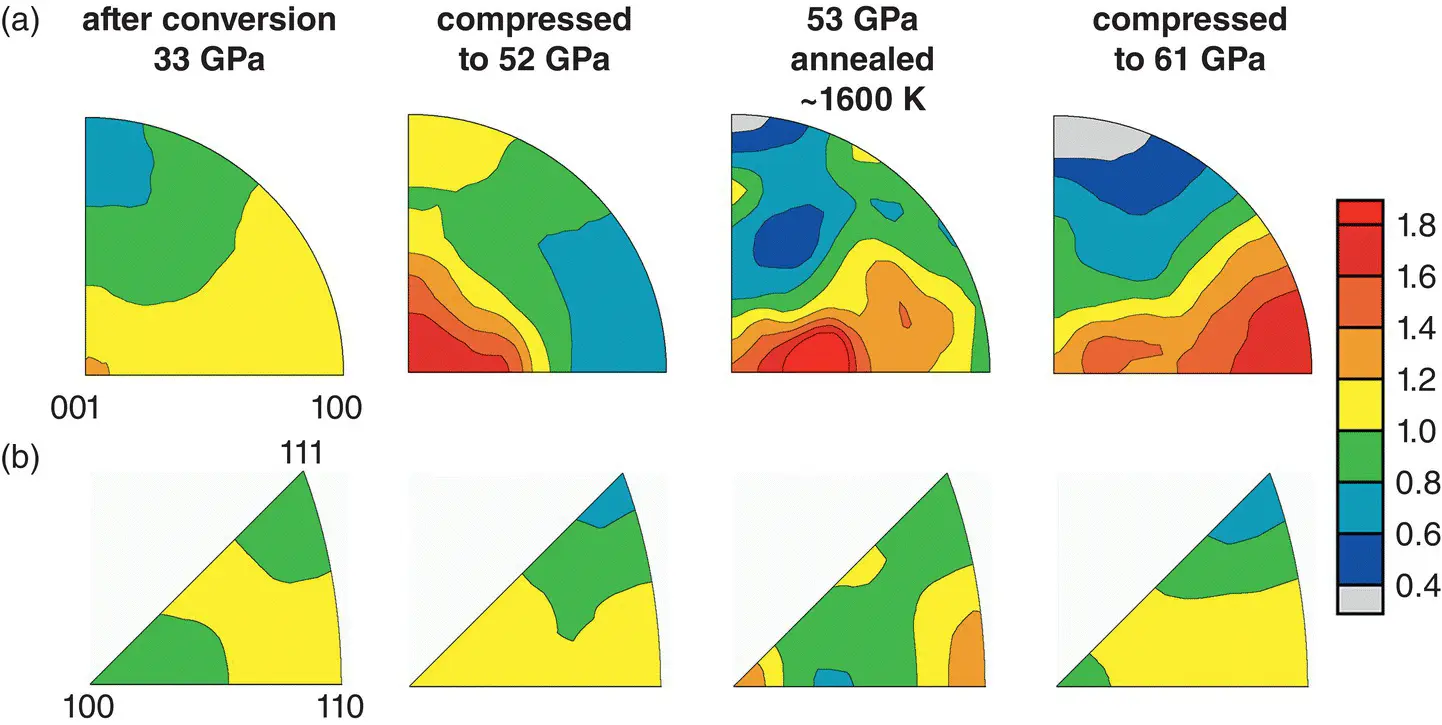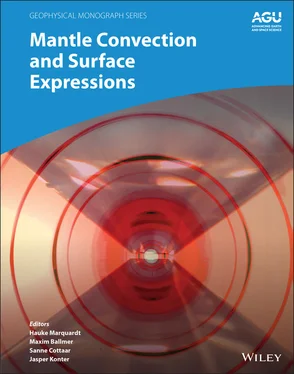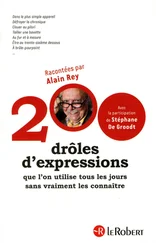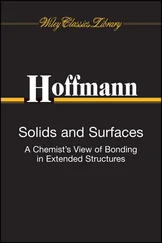
Figure 2.7 Texture development during diamond anvil cell deformation of bridgmanite + ferropericlase synthesized from San Carlos olivine. Inverse pole figures for bridgmanite are shown in (a) and inverse pole figures for ferropericlase are shown in (b). Surprisingly, ferropericlase, which is the weaker phase, does not develop texture while bridgmanite does.
Source: Miyagi & Wenk (2016).
In contrast to Brg + Fp and their analogs, deformation studies on pPv + Fp have not been performed either on the silicate system or in analog materials. Since Mg‐pPv is orthorhombic and appears to exhibit dominant slip on the (001) plane (Miyagi et al., 2010) one might expect that Fp deformed with Mg‐pPv may not develop texture due to high plastic anisotropy of the Mg‐pPv. However, a theoretical study by Ammann et al. (2010) suggests that Mg‐pPv may be considerably weaker than Brg. Experimental work on CaIrO 3Pv and pPv found that the pPv phase is ~5 time weaker than the Pv phase (Hunt et al., 2009), and in NaCoF 3the pPv phase is 5‐10 time weaker than the Pv phase (Dobson et al., 2012). This strength difference is similar to or larger than proposed strength differences between Brg and Fp (Girard et al., 2016; Kraych et al., 2016; Miyagi & Wenk, 2016) and it is possible that MgSiO 3pPv is similar in strength or even weaker than Fp. If MgSiO 3pPv is significantly weaker than Brg, then the strength contrast between MgSiO 3pPv and Fp may be low enough that the polyphase behavior is significantly different than in Brg + Fp aggregates and it is not clear how texture may develop in the individual phases. Additionally experiments suggest coexistence of Brg and MgSiO 3pPv in many regions above the CMB (Andrault et al., 2010; Grocholski et al., 2012). Thus the deformation behavior of MgSiO 3pPv + Brg and MgSiO 3pPv + Brg + Fp aggregates will also be important in the lowermost mantle.
Clearly, large differences in rheological properties between two phases in an aggregate can result in heterogeneous deformation, even with relatively small amounts of the harder phase. Heterogeneous deformation of the softer phase can result in randomization of the softer phase. While many examples on metals and crustal rocks are aggregates where the soft phase is volumetrically dominant, in high‐pressure phases it appears that low‐symmetry hard phases that are volumetrically dominant can disrupt texture formation in the soft phase. However, systematic study of this phenomenon as a function of plastic anisotropy, microstructure, phase fractions, and strength contrast has not yet been undertaken.
In polyphase mantle rock, complex interactions with respect to bulk strength are likely. At this point, it seems well established that Fp is weaker than Brg but the degree of this strength contrast is not fully constrained (Girard et al., 2016; Kraych et al., 2016; Miyagi & Wenk, 2016; Yamazaki & Karato, 2001b). Depending on the amount of Fp and the microstructure of the mantle and IWL type, microstructure may be relevant and Fp would control the strength of the aggregate. Given that estimates of the volume fraction of Fp are likely to be less than 30%, stability of an IWL microstructure should be largely dependent on the total strain experienced by the aggregate. High‐strain torsion experiments on a calcite + anhydrite mixture to shear strains of 57 at 1.5 GPa show extensive phase segregation that results in compositional layering similar to crustal mylonites (Cross & Skemer, 2017). If such phase segregation and compositional layering occurs in the lower mantle, it is likely that shear strain would be largely partitioned into the softer ferropericlase. Thus, in regions of high strain, such as in and around slabs, Fp is likely to control the strength of the mantle. If Fp in the mantle experiences a large increase in strength (Deng & Lee, 2017; Marquardt & Miyagi, 2015), this could lead to a mid‐mantle increase in viscosity consistent with geophysical observations (Mitrovica & Forte, 2004; Rudolph et al., 2015). This strengthening and consequent viscosity increase could explain observations of mid mantle slab stagnation (Fukao & Obayashi, 2013; C. Li et al., 2008) and plume broadening (French & Romanowicz, 2015).
Ca‐Pv, which is a relatively minor phase in the bulk of the lower mantle, can reach up 30% by volume in Mid‐Ocean Ridge Basalts (MORB) subducted into the lower mantle (Hirose et al., 2005; Ricolleau et al., 2010). As such, it is important to understand the rheological behavior of this mineral in the lower mantle and to resolve the discrepancies between the current measurements of Shieh et al. (2004) and Miyagi et al. (2009). One potential implication of a strong Ca‐Pv as suggested by the measurements of Miyagi et al. (2009) is that it could act to strengthen the slab, and it may behave similarly to carbide or ceramic particles in metal matrix composites, reducing texture development in the other phases. This could lead to reduced anisotropy in MORB rich regions of the slab. However if the strength Ca‐Pv is similar to the other phases then it will play a less profound role in controlling slab strength and anisotropy.
In deeper regions of the mantle, MgSiO 3pPv is likely the dominant phase in regions above the CMB. Although a direct comparison of experiments is difficult, as pressures do not overlap, pPv appears to be weaker than Brg in DAC experiments. Given that theoretical calculations of diffusion coefficients also indicate that pPv is significantly weaker than Brg (Ammann et al., 2010) and that analog materials show the pPv phase to be 5–10 time weaker than Pv (Dobson et al., 2012; Hunt et al., 2009), it is reasonable to expect that pPv is likely to be one of the weaker phase in the lower mantle. Interestingly the strength contrast between Pv and pPv analogs is as large or larger than that predicted for Brg and Fp (Kraych et al., 2016); thus, Fp and pPv may have similar strengths. If this is the case, aggregates of pPv + Fp would be considerably weaker than the rest of the mantle, and this would lead to shear localization in the D” layer. Shear localization above the CMB and resultant large strains and high strain rates could result in increased dislocation activity, consistent with presence of wide spread anisotropy in this region. Geodynamic models have also shown that a weak pPv layer will have important geodynamic implications for mantle convection in terms of heat transfer and temperature gradients, viscosity, and flow velocity (Nakagawa & Tackley, 2011; Samuel & Tosi, 2012).
Slip system activities and texture development in lower mantle phases have important implications for interpretation of seismic anisotropy. For a recent review of seismic anisotropy in the deep earth and methods to interpret anisotropy, see Romanowicz & Wenk (2017). The methodology that is typical used to relate slip systems to anisotropy has been to use a flow model combined with plasticity modeling to predict texture development in the deep earth. Single crystal elastic properties are then averaged over these textures to obtain polycrystal elastic properties. These combined with density can be used to calculate seismic properties. In the lower mantle, these properties are typically compared to shear wave splitting to assess the viability of that phase and deformation state to explain observed anisotropy. Flow models to calculate anisotropy may be obtained from convection simulations (Chandler et al., 2018; Cottaar et al., 2014; Immoor et al., 2018; Merkel et al., 2007; Miyagi et al., 2010; Wenk et al., 2011; Wu et al., 2017) or from instantaneous global flow models based on tomographic inversions (Ford & Long, 2015; Nowacki et al., 2013; Walker et al., 2011, 2018). Others have directly compared results from shear experiments to the mantle (e.g., Tsujino et al., 2016; Yamazaki et al., 2006) or from simple shear simulations as an approximation for mantle deformation (Merkel et al., 2006; Tommasi et al., 2018).
Читать дальше













